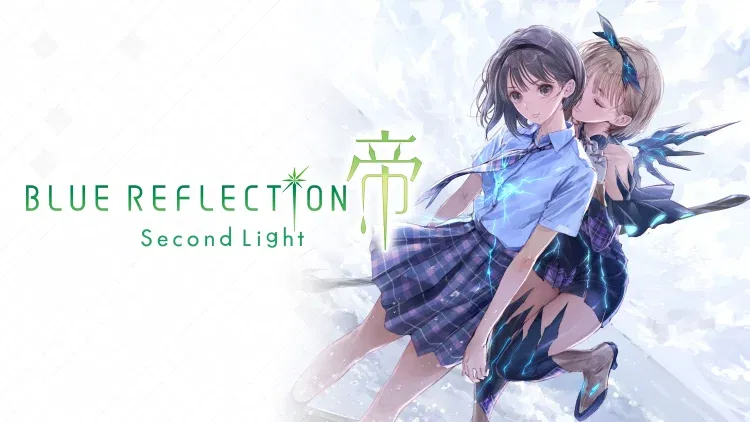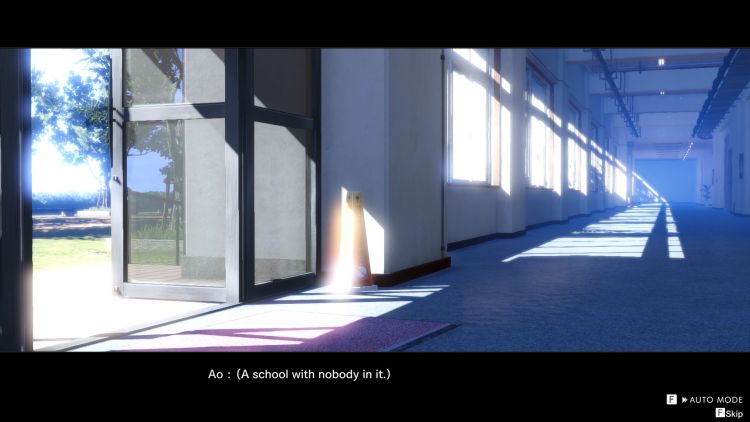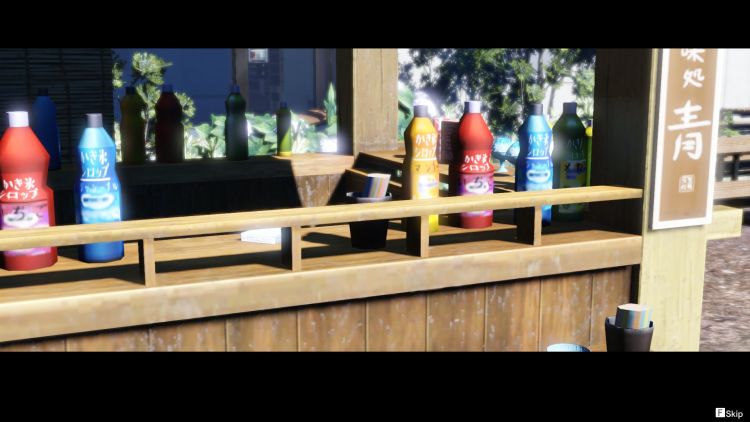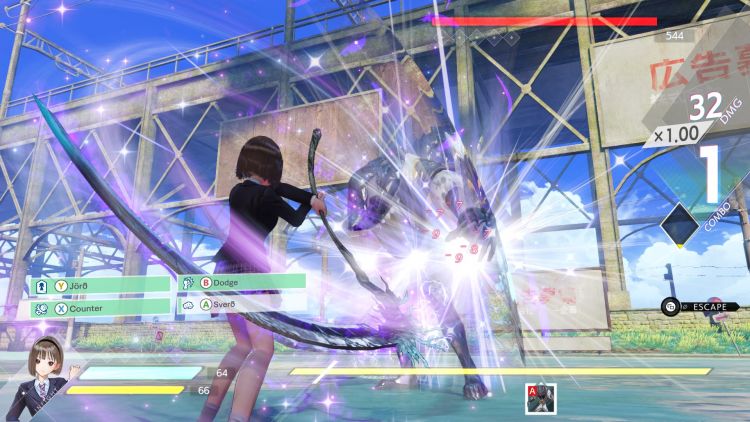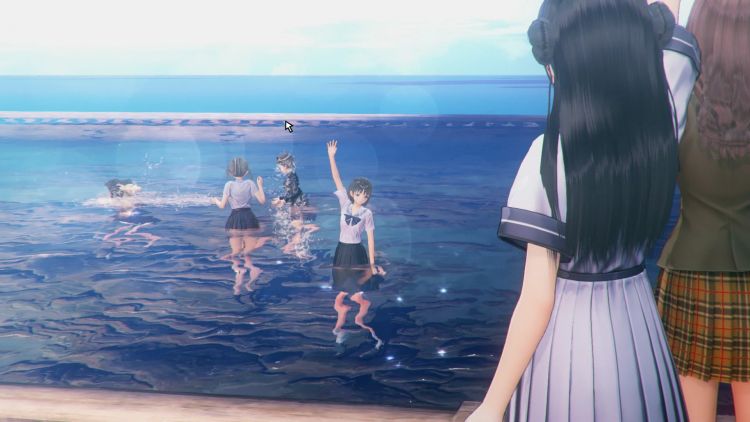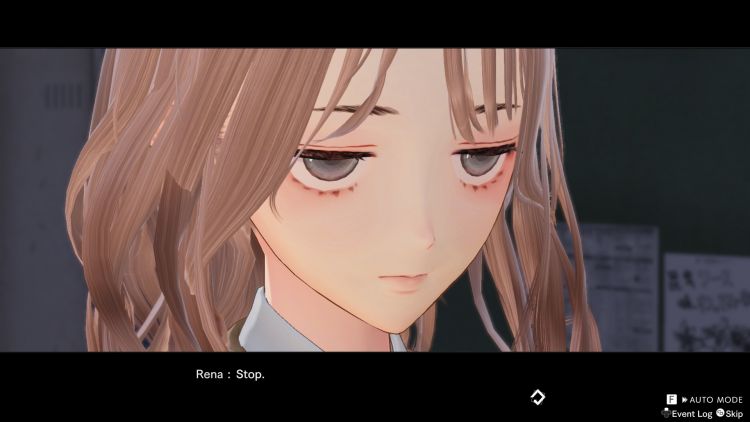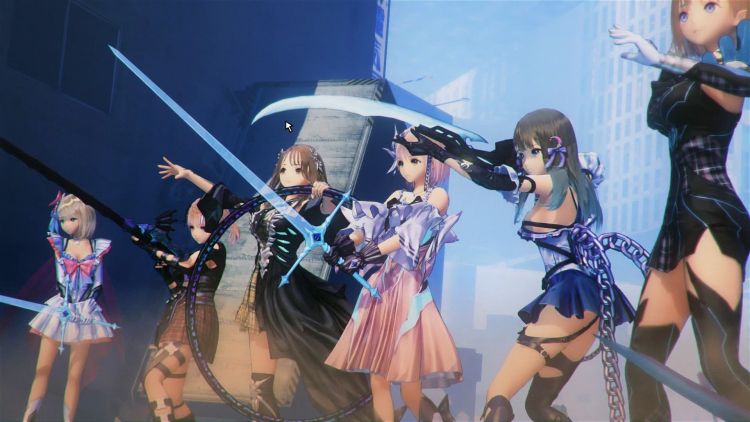Honestly, I have seen this series a lot over the past few years, and it has gained a bit of a cult following. I wanted to understand why and after trying out Tokyo Mirage Sessions Encore on the Switch and enjoying it, even though I wasn’t too sure about it, I thought I would take a look at this game. This isn’t my first time with the Blue Reflection series, but it is my first time playing one of the games. Through my experience with the Blue Reflection: Second Light, I can say I am happy I was interested. This game is almost like if you combined the Persona series and the Sailor Moon series.
Game Name: Blue Reflection: Second Light
Platform(s): PC, PS4, Switch
Publisher(s): Koei Tecmo
Developer(s): Gust
Release Date: 11.09.2021
Story
Ao wakes up in a world that only exists of an academy and three girls living there. Yuri, Rena, and Kokoro. These girls live in bliss and do their best to survive making do with the resources the academy provides to them. Rena, Kokoro, and Yuri have no memories of their past lives but seem to recall their names. After Ao discusses a world she came from with Kokoro, a new location opens up to them they call the Farway. The farther they travel in the Farway, the more memories that Kokoro receives from her past. They soon discover the Faraway, a place made up of the memories of the girls, with each one having a specific location for them. This new information makes them call these locations Heartscapes. After Kokoro remembers her past, she recalls a childhood friend who transports into the academy world.
Shortly afterward, that childhood friend then has a Heartscape appear, which helps them remember much of the world they left behind. This leads to a number of questions such as why are they in this academy, and what happened to their world? Can they go back? This is the premise of Blue Reflection: Second Light.
Do you need to know the first game or the anime series to understand this game?
No, you do not. Some things with Hinako and two of the other (spoiler) characters might not make as much sense as the other girl’s stuff because of their relationship in the first game you don’t get to see. Luckily you should be able to understand this going in with fresh eyes with how easy they explain the premise. Otherwise, you witness everything with the fresh eyes of Ao, so you aren’t going to be lost in the dark picking up this title first.
Gameplay
Stealth quests are a part of this game and help add variety to the Heartscapes, not just making them areas with lots of demons to kill. Sometimes you got to hide from giant demons or just difficult demons in general.
When finding materials for crafting, there is a database function that lets you see where you can gather them. Whether it be enemies or Heartscape specific materials, the database has you covered in helping locate resources to craft food, facilities, or quest items. Requests can require you to create items so using the database is a must for that. Most requests require you to find items, craft items, craft facilities or just defeat a number of features. There is a mechanic called dates where you can traverse through the academy with another girl and learn more about them and learn more about the academy as well. It adds TP to the main character Ao as well as unlocks talents for both characters you can learn. Going on dates generally entails going to locations in the academy and having dialogue options to help prod into the girl’s backstory.
When you’re in the academy you can use a button to gain access to the school map and fast travel to most locations instantly. This makes it much easier to traverse in the area without having to walk there manually. You can also build various facilities in the game across the academy campus. These structures add perks like increased stats or faster Ether recovery. Some facilities will need to be activated since they might have negative perks added as well. Once you reach a certain part, you’ll have more facilities than you’ll have space so you’ll have to decide what facilities you’ll want in the academy. Generally, it’s good to try getting the newer ones to add more date locations to the academy. More date locations mean more talent points and more stat and perk boosts.
Once I got to the last few Heartscapes in the game, I didn’t need to fight the demons nearly as much since I already maxed level with most of my team. Hiori was the last one to hit max level so grinding on enemies was practically pointless. That is why I wish the level cap weren’t set to level 50. Hopefully, that cap increases to like 70, at least if not 100. I personally dislike hitting max level before I feel like I need to.
Customization
Looking at some of the questions about this game, a lot of them asked about character customizations. There is a way to customize your individual characters to increase their stats and work on their builds. This is done through the fragment equipment section. You do not get a lot of variety as your best fragments are gained from the later chapters in the game, but you can min-max the stats in a priority way based on the multiplier fragment pieces. You get fragments from doing successful dates with the girls playing as Ao. These fragments can increase attack, defense, hp, dodge rate, add additional skills, or even give you exp boosts. I enjoyed the attack and defense boosts with added multipliers on them that would keep increasing with every new fragment piece equipped onto the character.
Combat
Combat starts with beginning your average gear level. Gear Level is a level that goes from 1 to 5 and, based on the level your gear level is at, will determine your character’s Ether Recovery. When time passes, your character accumulates Ether. When you get enough Ether, you can then use a skill. At gear level 1, you have a Max limit of 1000 Ether, gear 2 is Max of 2000 Ether, and so forth. When you reach gear 3, your character uses their Reflector ring to give themselves a unique outfit that represents their desires. This makes them have higher base stats and a selection of more skills to use. It also enhances the skills you already can use as well. It gives them added passives or bigger multipliers. You shift gears by using skills. Utilize skills to get to gear five as soon as you can to put yourself at an advantage.
The goal in combat obviously is to kill the enemy demons. You start with a base damage multiplier of 1, and for every attack you do without getting knock backed it adds a multiplier to your damage. A knockback occurs when you do enough hits to an opponent before they shift gears. If your opponent shifts gears, it resets to its original knockback level. If you or an opponent gets knock backed, you stop accumulating Ether for a certain amount of time or until you get it healed by an ally. Your party consists of four characters; three handle the attacking and one on the sidelines who supports the team using abilities, items, or swapping out characters in the party.
Once you fight the harder enemies and get them knock backed, they’ll put go into a defensive mode and put shields around themselves. If you can break all the shields before they get back up, you then initiate one on one combat. The character who breaks the shields is the one who goes one on one with the demon. You have the choice to dodge, attack, counter, and a unique support skill. They have a cooldown with each ability in one on one. If you attack, you have to wait for it to refresh before you can attack again. Make sure to dodge or guard at the right time so you can keep your combo count going and increase your damage multiplier. If you defeat the enemy in one on one combat, you’ll get a cool finishing animation from that specific girl.

Music
The music in this game, for the most part, is very relaxing. The battle music is engaging but also puts you in a peaceful mood at the same time. There are also moments of static noise throughout the soundtrack that act as a reminder that you are not in the real world sense. The only music I would say gets old after a while is the dating music. Though that just could be because I personally did as much of the dates as soon as I was able in order to get all the perks. Overall the music is very beautiful, and it fits the aesthetic of the game very well.
Graphics
Overall this game looks really pretty. The environments and character movements are fantastic. I am really digging the water effects too on the game. Blue Reflection: Second Light is a game you can spend looking at the environments and loving them. At first glance, the faces can feel samey, but overall once you are focused on the eyes, you can tell the differences, especially as you keep playing the game and spend more time with the characters.

Performance
I decided to play the full game on a fairly beefy PC, equipped with an RTX 3060 and an M.2 SSD. Which ran much faster than the backward compatible mode on the ps5 I previously played the demo on. Loading times on the PC we pretty much nonexistent, while the frame rates were high — locked at 60 frames per second. In my opinion, this made combat a lot faster from what I could feel from my time on the ps4 demo. I experienced a few stutters entering Heartscapes from the academy, but otherwise, it was a flawless experience at 60 fps.
Bugs/inconveniences
I put the game on full screen, but every time I boot up the game, it goes back to windowed mode even though the settings say full screen. So I go from full screen to borderless windowed mode each time I start up the game. Not a game-breaker, but it was a bit annoying. Uta’s Heartscape in the first area, a demon goes way faster than the rest, and it kind of clips through a building because of it.
The very last dungeon has layers to it, but the map doesn’t reflect that very well. My first go through had a few issues wondering where I was supposed to go. Basically, the flat map didn’t help much with going around the different floors since the map didn’t separate the dungeon based on what floor of the dungeon you were on. This is something that needs to be addressed. Otherwise, this will serve to confuse other players.
What did I enjoy?
I enjoyed the game more than I expected to, and the combat was addictive. I do like that you can turn off the animations for transformations since they take away from the timing of combat once you got into the swing of things. The relationship of the girls is believable and gives great substance to the emotional conflicts of each character. I loved, loved, loved some of the eye animations, specifically the angry face or death stares! Rena gives some of the best looks in this game. Fighting enemies gives you a good amount of experience and items, so fighting them in the Heartscapes doesn’t feel useless or just like busywork. Combat was fluid, and I felt that the game was optimized well.
What did I not like?
The outfit selection in the game is terrible. The only character with any real outfit choices is Ao. None of the other girls really get any outfits or choices but their default uniform. I know it is most likely a concept for future DLC, but I wish they had a number of unlockable outfits you get for dates, side quests, crafting items, or facilities. It feels like it is just tacked on with no real payoff. Please, Gust, give me outfits for my girls Hiori and Shiho, who were the two I mainly focused on during the game.
Another thing I disliked in the game was not able to change the character you control in the Heartscapes. I wanted to change my main character to Hinako or Shiho in their respective Heartscapes but was only able to play as Ao by changing the main combat party around with Hinako or Shiho in mind. Don’t give me a variety of girls to be in the party but only let me control one of them, as that’s plain silly. Also, yes, your entire party consists of girls and only girls. Is that a problem for you? If so, you might as well skip this game completely as this isn’t going to be for you.

How long is this game?
It took me 33 hours, 33 minutes, and 33 seconds to complete the first playthrough of Blue Reflection: Second Light on normal difficulty. This included creating all the facilities, crafting every single item at least once, getting Hiori and Shiho to talent level 10 to max out every single one of their talent skills and perks, getting all girls to level 50, and completing every side quest in the game.
For the completionists out there, Blue Reflections: Second Light does include a new game plus that gives you a possible second ending. I did not do that though but it gives you half of all the talent points you accumulated for every character. Every recipe is completed and in your database as well as grants you hard mode.
I highly recommend this game to fans of JRPG’s with great emotional stories and relationships. I also recommend it to those who like a good mystery in their games. It has a few great plot twists that enhance character moments. That is why I rate this game 4 out of 5!
Blue Reflections: Second Light will release on November 9th, 2021, on Nintendo Switch, PlayStation 4, and PC.
Review Disclosure Statement: Blue Reflections: Second Light was provided to us for review purposes. For more information on how we review video games and other media/technology, please review our Review Guideline/Scoring Policy for more info.
Affiliate Link Disclosure: One or more of the links above contain affiliate links, which means at no additional cost to you, we may receive a commission should you click through and purchase the item.
Summary
Persona meets Sailor Moon and it lands more times than not! Very good game and has an engaging story.
Pros
- Combat is fun
- Relationships are impactful
- Music is engaging, yet relaxing. Sets the mood well.
- Great design choices.
- Persona meets Sailor Moon and I love it.
Cons
- Features can seem tacked on at times (IE, Outfits few to no choices)
- Dating mechanic a bit repetitive for what it could be.
- Game may not be up your alley if you don’t like casts full of girls (How dare you)
- Not enough down time in story for what they try to perceive as time.


